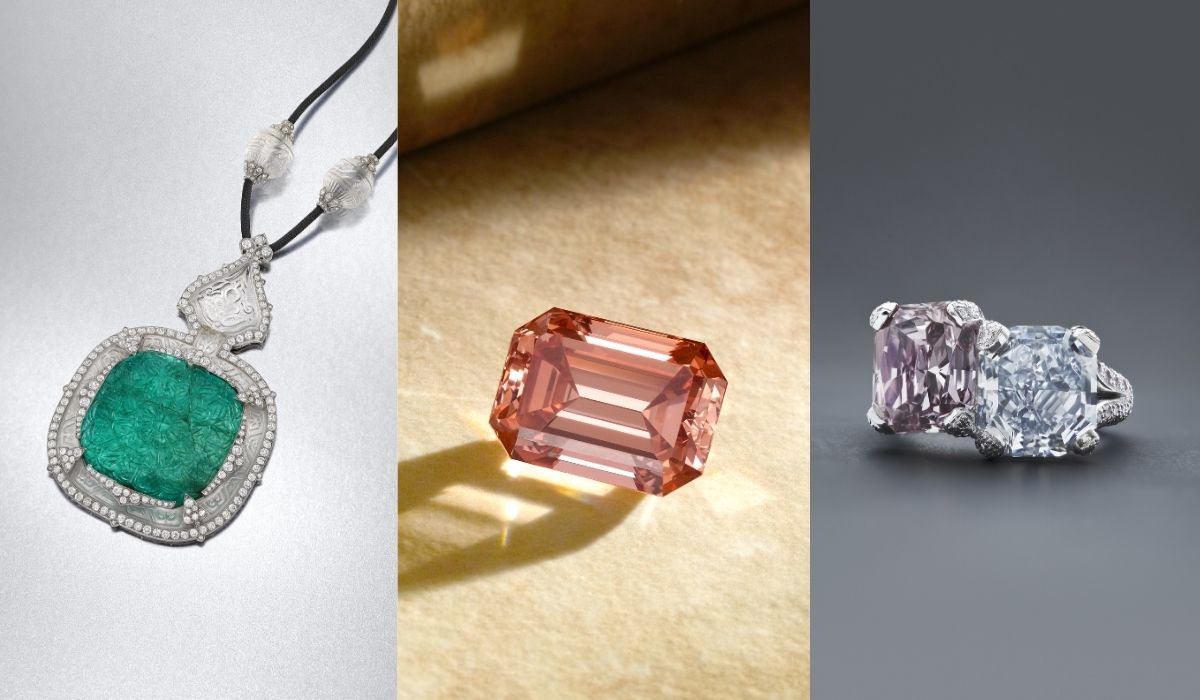Auctions, Make Way for the Younger Generations
The increase in online and telephone bidding is changing the face of the auction sector, whose charm, however, resists the passage of time and fashions. Kate Flitcroft, Co-Head of the Jewellery Department at Bohmans, and Emilie Volka, Director of Artcuria
Your customers are worldwide. Do Europeans, Asians and Americans approach the auction world differently?
KATE FLITCROFT With the everexpanding digital world, jewelry collectors range beyond their geographical region. Currently, there is a vibrant international market for high-quality vintage, certified precious stones and exceptional pieces from top jewelry houses, such as Cartier, Van Cleef & Arpels and Boucheron, for which major bids are made from all over the world, directly from Hong Kong, the Middle East or Los Angeles. Competition is often fierce for jewelry that has a specific provenance, tells a story or is unique, rare or in limited numbers. Asians are increasingly attracted to early 20th-century jewelry, particularly in the Art Deco and Belle Époque styles, and there is a flourishing interest in jewelry with an Art Nouveau flavor, including that of the American brand Marcus & Co. Jewelry with a touch of glamor and magnificence, on the other hand, attracts the eye of the American public. They usually choose pieces with diamonds of a considerable carat and colored gems from brands such as Harry Winston, Jean Schlumberger and Verdura. Also popular in jewelry from private collections with a story to tell, such as the two Art Deco pieces both recently sold for twice their original estimate. They were a 1925 diamond sautoir by Rubel Frères (£165,500) and a 1930s, double clip brooch (£40,960) by Bulgari.
EMILIE VOLKA In my opinion, it is first and foremost a question of taste. Our customers have different approaches to collecting. While they are not necessarily looking for the same things, they all go to a specific auction house and a specific country for the same reasons. The European jewelry market, for example, is very popular and renowned for the rarity and age of its piecesand the history behind luxury companies. Asians buying in France and Monaco appreciate rubies, precious pearls, antique pieces and those made by the great jewelry houses in Place Vendôme, and, more generally, the rarity of an object. Americans, on the other hand, are particularly attentive to provenance. They love French designer jewelry and the art de vivre à la française.
What is the age bracket of the new generation of collectors and what kind of jewelry do they collect?
KATE FLITCROFT Young people know more about stones and companies than they used to. They love to establish direct relationships with our specialists and our task is to develop an ideal ad-hoc catalogue to compare them with similar objects dealt with in the past. Some of them go on to attend courses or take gemological qualifications to improve their approach to the subject and therefore to investing in jewelry. Their interests range from antique jewelry to modern and contemporary artistic jewelry, as well as 20th and 21st century designer jewelry and the great classics of renowned brands. Then there are those who invest in certified colored diamonds and gemstones in excess of 5.00 carats. Lastly, more and more
women are buying jewelry for themselves. They value discretion, seek exclusivity and a trusting relationship with an expert. Participating in auctions offers all this with the added bonus of buying an object with a unique history.
EMILIE VOLKA We have more and more young collectors, but they are not our main clientele. They usually tend to be more interested in relatively famous, or even unbranded, companies, even though a brand is a guarantee of quality. In this age group too, it is a matter of taste, but as a rule they prefer reasonably priced, minimalist jewelry. Sustainability, ecology, ethicality and durability in jewelry are becoming increasingly important factors. The fact that the auction market is a second-hand market is another reason why young collectors turn to us. For our part, we cultivate the curiosity of this specific segment by offering in-depth appointments with our experts, thematic lectures to present the stories of brands, or even short workshops on how to look at a precious stone.
Any striking examples of vintage pieces sold for record prices in the last 5 years?
KATE FLITCROFT I remember four pieces in particular: Cartier's “Lost Jewel”: a diamond necklace with emeralds and rock crystals from the collection that belonged to writer Vita Sackville-West. Pre-sale estimate £ 50-70.000, sold at £ 102.562. An early 1900s Belle Époque brooch with aquamarine and diamond that belonged to the Duchess of Devonshire. Pre-sale estimate £ 30-40.000, sold at £ 94.000. The “Toi et Moi” ring with Mouawad diamonds and colored diamonds, sold at £ 2,952,400. A 12.21 ct, deep orange-brown diamond with rosy highlights mounted on a gold and platinum ring that fetched a record 1.8 million dollars
EMILIE VOLKA The earrings and brooch from Van Cleef & Arpels' 1930s Danseuse collection, sold for over €100,000 certainly represented an exceptional sale, but even more so the 7.105 ct, Guillemin & Soulaine ring with diamonds, 18k yellow gold and bright red rubies of Burmese 'pigeon blood' origin, sold for €2,802,000, and an 18k white gold ring with a 17.50 ct, emerald-cut diamond, sold at auction for €1,062,000.


